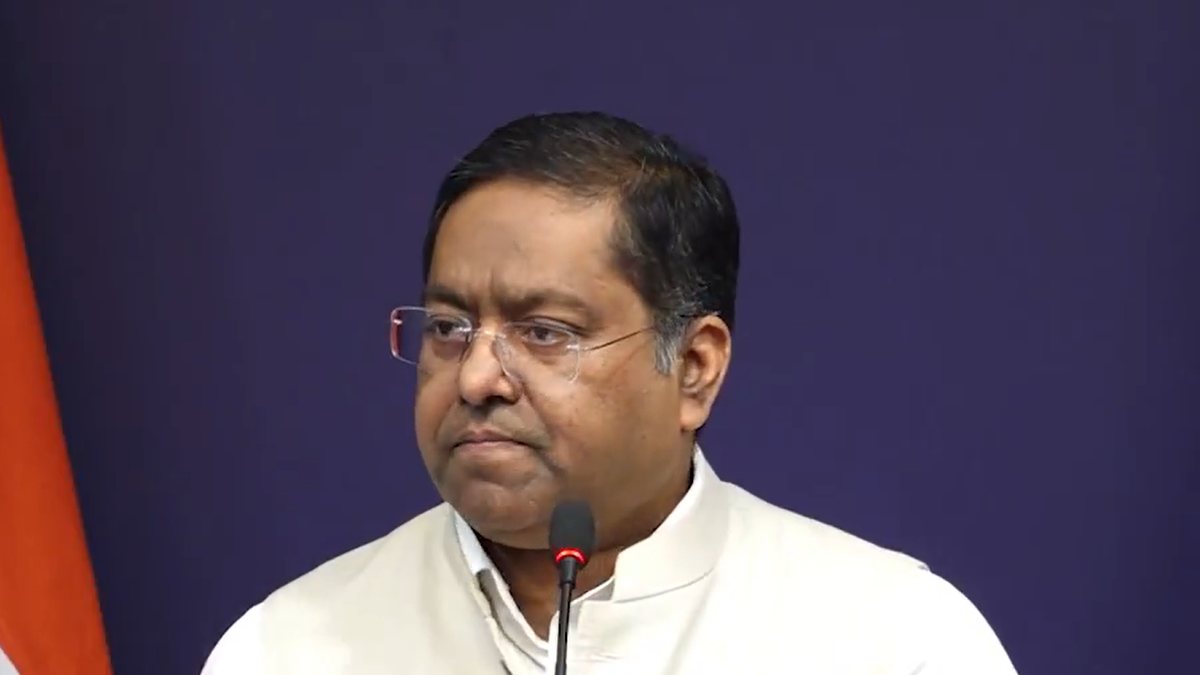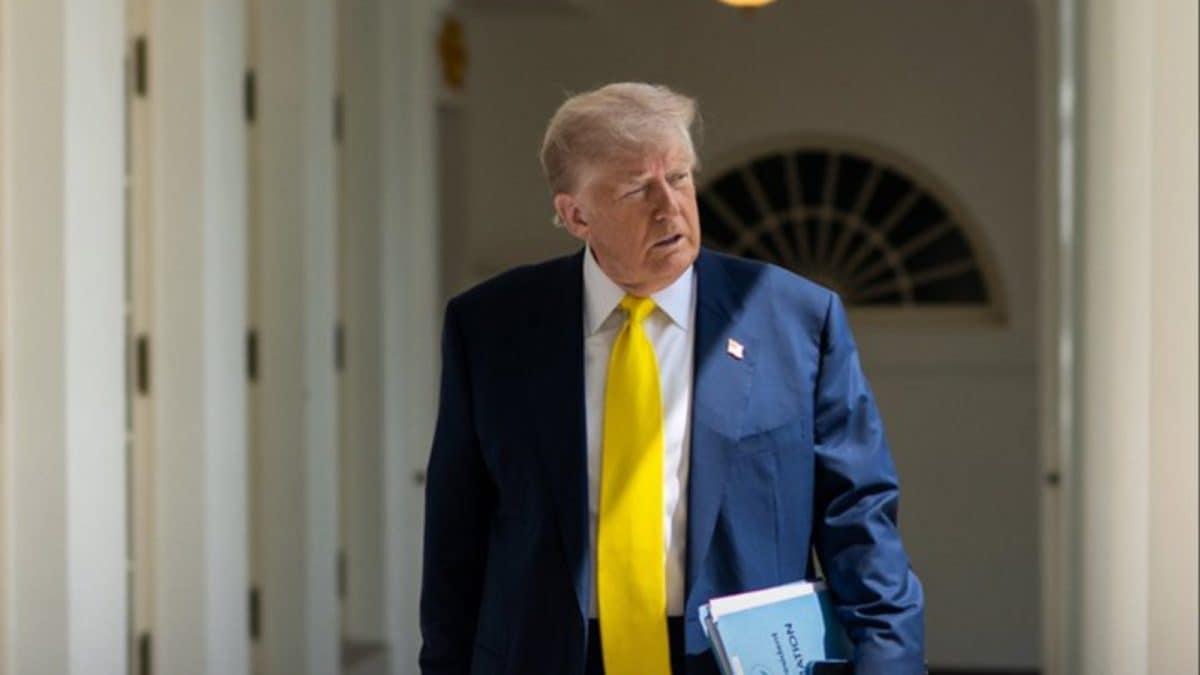It had been six years since 50-year-old G. Chittamma stepped out of her village, some 30 km from the sleepy little town of Kasibugga in Palasa mandal. The severe gastric ailment she suffers from had almost confined Chittamma to her home and its immediate surroundings, even unable to help her husband, Jagga Rao, with agricultural work.
But misfortune had been befalling her family one after the other for the past several months. They had invested ₹20,000 on fertilizers, pesticides and tractor charges to cultivate paddy on leased land, but the recent downpour brought by Cyclone Montha damaged their crop, and their only son, a lorry driver, had been out of work for the past two months, drying off the family’s income.
So, when Chittamma heard that a group of women from her village, Nandigama, were visiting the Sri Venkateswara Swamy temple at Kasibugga, which had gained popularity as “Chinna Tirupati” among the people of north Andhra, on the occasion of Karthika Ekadasi on November 1, she decided to go too.
“After preparing lunch for my family, I joined the women heading to the temple. We boarded a bus at 10 a.m., and reached the temple junction by 11 a.m. The small town was already bustling with devotees from various places,” she explains.
Chittamma and the others walked to the temple along with a sea of devotees who filled the roads leading to the shrine and had darshan. Chittamma had just reached the stairs on her way out when the entrance gate was closed behind her as it was nearing noon, time for Anna Bhogam (offering to God). “There was only one exit and entrance to the temple, she recalls. Chittamma believes that somebody already inside the temple might have reopened the entrance gate and tried to come out, leading to a rush of devotees from the outside as well.
Within minutes, people began to jostle for space, and the barricades collapsed. “I fell from the stairs, and people began falling on top of one another from a height of nearly 10 feet; it was utter chaos. I vaguely remember four persons trying to pull me out. When I regained consciousness, some were giving me first aid. They broke a coconut brought by a devotee and made me drink the water and shifted me to the Community Health Centre a few minutes later,” she adds, showing her fractured right hand and badly bruised leg.
Chittamma was one of the 16 injured in the stampede at the temple on November 1, which claimed nine lives. “It all happened in a few seconds. A few police personnel or security guards at the location could have prevented the incident,” says Chittamma, now recovering at in the Community Health Centre.
A few beds away from Chittamma, lying in deep pain with both her legs fractured, is 45-year-old Ch. Kantamma. She visited the temple from Sarimipalli village in Mandasa mandal on a two-wheeler with her younger son Adi. “There was a heavy rush, and we were proceeding slowly towards the main entrance of the temple. I was climbing the steps when people suddenly began rushing out in the opposite direction. Before I could realise what was happening, I fell to the ground [from the side of the stairs], and the stainless-steel railings fell on me. I was pinned down by the rods and a group of devotees who fell on them,” she says.
Adi, who was a few feet away, rushed to her rescue. “I saw my mother fall and joined other youth to pull the women out. I pulled out my mother and some others and shifted her to the hospital,” he says, adding that there were no police personnel to control the crowd. “Both my legs are fractured, and I am not sure when I will recover,” says Kantamma.
Holes in safety
The stampede at the The Sri Venkateswara Swamy temple in Kasibugga temple, the worst of its kind in the State over the past year, has raised questions about the safety of devotees at temples managed by private individuals and the need for a Standard Operating Procedure (SOP) to prevent such tragedies.
The temple is managed by 94-year-old Hari Mukund Panda. Denied a proper darshan of Lord Venkateswara at Tirumala over a decade ago, Panda began constructing the temple in Kasibugga, a town of just over 50,000 residents.
From the main road, one must travel about 750 metres to reach the temple, which sits on nearly 14 acres. Several structures, such as toilets, are still under construction; only the Sri Venkateswara Swamy temple, the temples for Lord Shiva and Nandi and statues of Garuda and Hanuman have been completed. It was opened to the public around May and became an instant crowd-puller, particularly on Saturdays.
“Nearly 2,000 devotees started visiting the temple every Saturday. Being Karthika Ekadasi, the crowd swelled to over 20,000,” Panda says. Asked why the police were not informed about the event, Panda says he didn’t expect such a huge turnout.
Panda is known for his philanthropy and social service. “Pandaji owns a large stretch of land in the town, including the coconut groves and areas surrounding the temple,” says P. Jagdeesh, a government schoolteacher and resident. The temple’s sudden fame was largely owing to social media exposure. “While locals were aware of the ongoing construction and knew its administrator, social media interviews during the temple’s inauguration went viral and began attracting devotees,” adds Jagdeesh.
G. Usha Rani, another resident, says that since Panda does not accept donations, devotees do voluntary service at the temple. “On that day, some volunteers were managing the crowd near the idols inside. They were making announcements through a microphone, asking people to maintain the queues, but were unaware of what was going on at the stairs,” she says.
Rani, who was serving water outside her house to visiting devotees, recalls: “One woman told me about the stampede, and within a few minutes, an ambulance arrived near the main entrance, and a boy aged around 13 was shifted to a hospital. Unfortunately, he died.”
K. Krishna of Palasa, an eyewitness to the Kasibugga stampede, says that there were no sheds to protect devotees from the intense heat from the main entrance to the staircase. People, already fasting since morning, were exhausted and eager to enter the temple. “Most were carrying small or large baskets or luggage, which made things worse. If their hands had been free, they could have supported themselves or held onto the wall,” he said. “There were no counters for devotees to deposit their belongings as the temple is still under construction,” he adds.
While people like Krishna tried to save others, 37-year-old autorickshaw driver Ranjala Harikrishna from Dharmapuram, Itchapuram, says there were others who showed no empathy toward the victims. “Eighteen of us came in two autorickshaws for darshan when the stampede occurred. The railing fell on me and others. Four to five people fell on me, and I was trapped under the pile up to my chest. My leg was hurting, and I was suffocating. I extended my hand to one person entering the temple for darshan, but he simply walked away,” Harikrishna says in disbelief.
Government response
Speaking to the media after the visiting the site that day, Minister for IT Nara Lokesh attributed the sudden surge of devotees to social media exposure and the availability of free bus rides for women. “Nine out of ten devotees who came that day were first-time visitors. People came in small groups from every village, and no one anticipated such a huge turnout,” he said. The Minister assured that the government would introduce continuous monitoring of privately constructed temples.
Post the incident, Chief Minister N. Chandrababu Naidu instructed all District Collectors and Superintendents of Police to compile data on all temples (both privately managed and those under the Endowments Department), including major festival days and estimated footfall. CCTV cameras and crowd management systems would be made mandatory, he said. Simultaneously, the government directed the Endowments Department to prepare SOPs for privately run temples to ensure safety during large gatherings. “Private temples must coordinate with local authorities before holding public events,” he said.
Secretary (Revenue), Endowments Department, Hari Jawaharlal told The Hindu that they are in the process of drafting an SOP to prevent such incidents. “We are collecting data on private temples. Officials from the Endowments, Police, and Revenue departments are gathering details from across the State,” he says.
Srikakulam Superintendent of Police K.V. Maheswar Reddy says lapses in temple construction led to the incident. “The entry and exit are the same, and when one of the gates was suddenly opened, devotees coming out fell on those entering the temple,” he says, adding that the stairs had been poorly designed. “In any temple or building, the slope of stairs should be less than 45 degrees. Here, it was steeper than that. As devotees coming down fell from a higher slope, those below couldn’t bear the pressure, leading to the stampede.”
Further, the railings were weak. “The steel railings were made of 1-mm thick pipes and embedded just 2.5 inches deep. This caused them to give way,” he explains, adding that the victims could have escaped with minor injuries had the construction been done properly. The police found that Panda had not engaged a professional contractor for the temple’s design and construction.
Asked about alleged intelligence failure, the SP says there are 40–50 temples in each police station’s jurisdiction, each visited by 500–1,000 devotees on auspicious days. “Though there was no CCTV recording, our technical analysis shows a crowd of 2,500–3,000 on the temple premises, including the staircase area. Around 500 people might have been on the stairs when the incident occurred,” he says. Intelligence officials also say that word about food distribution at the temple might have drawn a heavier crowd.
Whose responsibility?
While the government blames private management and unexpected rush of devotees, the Opposition YSRCP blames the government for the loss of lives. “The government can’t wash its hands off the matter by saying the temple doesn’t come under its purview. Law and order is a State subject, and it is the government’s responsibility to protect lives,” says former Minister and YSRCP leader Perni Venkataramaiah. “The government has not learned from past mistakes.”
Over the past year, two other temple tragedies claimed a total of 13 lives. In January, six devotees died and more than 25 were injured in a stampede at the token-issuing counter in Tirupati during the Vaikunta Ekadasi festivities. Again in April, a wall collapse at the Sri Varaha Lakshmi Narasimha Swamy temple in Simhachalam, Visakhapatnam, left seven devotees dead on Chandanotsavam day.
In both incidents, small lapses led to tragic loss of lives. While the Tirupati stampede is believed to have occurred following the sudden opening of a gate by a police officer, the Simhachalam tragedy was attributed to a new wall collapsing in heavy rain.

 4 hours ago
5
4 hours ago
5







 English (US) ·
English (US) ·